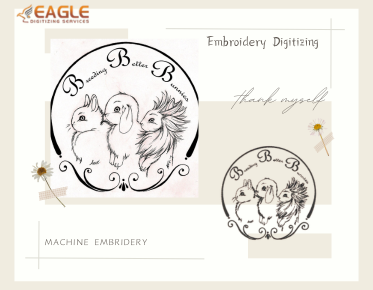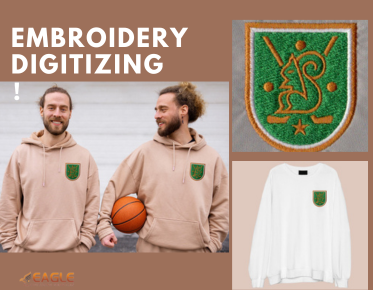Are these the top 7 must-know facts about vector art graphics?
Vector art graphics have revolutionized the way we create and interact with digital imagery. Unlike traditional raster graphics, which can lose quality and become pixelated when scaled, vector art maintains its crispness and clarity at any size. This makes it indispensable for designers across various industries. Whether you’re designing a logo, an info graphic, or an illustration, vector art provides the precision and flexibility that other formats simply can’t match.
The History of Vector Art
Early Days and Pioneers
Vector graphics have their roots in the early days of computer graphics when they were used for applications like radar displays and early CAD systems. The development of vector graphic software in the late 20th century paved the way for their widespread use in design and illustration.
Evolution Through the Digital Age
With the advent of personal computers and more sophisticated software, vector art became accessible to a broader audience. Programs like Adobe Illustrator, introduced in 1987, revolutionized the way designers worked, allowing for complex and detailed illustrations that could be easily edited and scaled.
Key Milestones in Vector Art Development
Over the years, vector art has seen numerous advancements, from the introduction of Bezier curves to the development of new tools and techniques for creating and manipulating vector images. These innovations have expanded the possibilities of what can be achieved with vector graphics, making them an essential part of modern design.
Core Benefits of Vector Art
Infinite Scalability: Size Doesn’t Matter
One of the most significant advantages of vector art is its infinite scalability. Whether you’re creating a tiny icon or a massive billboard, vector graphics will maintain their integrity and sharpness. This scalability ensures that your designs look professional at any size.
Crisp and Clear: Always High Quality
Vector graphics are always crisp and clear, regardless of their size. This makes them ideal for logos and branding, where maintaining a polished and professional appearance is crucial. You’ll never have to worry about your graphics looking pixelated or blurry.
Easy Edits: Flexibility at Its Best
Vector art offers unparalleled flexibility when it comes to editing. Because each element is defined mathematically, you can easily tweak shapes, colors, and sizes without degrading the image quality. This makes vector graphics perfect for iterative design processes.
Smaller File Sizes: Efficient Storage and Sharing
Vector files are typically much smaller than their raster counterparts, making them easier to store and share. This efficiency is particularly beneficial when working with complex designs or collaborating with others, as it streamlines the workflow and reduces the strain on storage resources.
Applications of Vector Art
Logo Design: The Backbone of Branding
Logos need to be versatile, appearing on everything from business cards to billboards. Vector art’s scalability and clarity make it the perfect choice for logo design, ensuring that your brand looks consistent and professional across all mediums.
Illustrations: From Comics to Editorials
Vector art is widely used in illustrations, from comic books to editorial pieces. Its clean lines and vibrant colors make it ideal for creating visually engaging and detailed artwork that stands out.
Infographics: Making Data Look Good
Infographics are all about presenting information in an easy-to-digest and visually appealing way. Vector graphics allow designers to create intricate and informative visuals that can be resized and modified without any loss of quality.
Web Design: Enhancing User Experience
In web design, vector graphics are used for icons, buttons, and other UI elements. Their ability to scale and remain sharp on any screen size is crucial in the era of responsive design, ensuring a consistent user experience across devices.
Print Media: High-Quality Prints Every Time
For print media, vector graphics ensure high-quality results every time. Whether it’s a poster, brochure, or magazine, vector art provides the clarity and detail needed for professional-grade prints.
Key Elements of Vector Art
Paths and Anchor Points: The Basics
At the core of vector art are paths and anchor points. Paths are lines or curves defined by mathematical equations, while anchor points are the points where paths begin and end. Understanding these basics is crucial for creating precise and clean vector graphics.
Strokes and Fills: Adding Depth and Style
Strokes and fills are essential elements of vector art. Strokes define the outline of a shape, while fills add color to the interior. Manipulating these elements allows artists to add depth and style to their designs.
Layers and Groups: Organizing Your Work
Layers and groups help keep vector artwork organized. Layers allow artists to separate different elements of a design, making it easier to edit and manage complex projects. Grouping elements simplifies the process of moving and transforming multiple objects at once.
Gradients and Patterns: Enhancing Visual Appeal
Gradients and patterns can add a lot of visual interest to vector art. Gradients create a smooth transition between colors, while patterns can add texture and complexity. Mastering these techniques can significantly enhance the appeal of your designs.
Famous Vector Artists and Their Work
Iconic Vector Art Pieces
Some vector art pieces have become iconic, standing out for their creativity and technical mastery. These works often push the boundaries of what’s possible with vector graphics, inspiring other artists to explore new techniques and styles.
Spotlight on Influential Vector Artists
There are many influential vector artists whose work has shaped the medium. These artists have contributed to the development of vector art through their innovative techniques and unique styles, leaving a lasting impact on the art world.
Learning from the Masters
Studying the work of master vector artists can provide valuable insights and inspiration. Analyzing their techniques and understanding their creative process can help aspiring artists improve their own skills and develop their unique style.
The Future of Vector Art
Emerging Trends and Technologies
The world of vector art is constantly evolving, with new trends and technologies emerging all the time. From augmented reality to new software features, the future of vector art is full of exciting possibilities.
The Role of AI in Vector Art
Artificial intelligence is set to play a significant role in the future of vector art. AI-powered tools can automate repetitive tasks, enhance creativity, and offer new ways to create and manipulate vector graphics, making the design process more efficient and innovative.
Predictions for the Next Decade
Over the next decade, we can expect to see continued advancements in vector art tools and techniques. These developments will likely make vector art even more accessible and versatile, opening up new possibilities for artists and designers.
Challenges in Vector Art
Learning Curve: Overcoming Initial Hurdles
One of the challenges of vector art is the initial learning curve. However, with practice and the right resources, artists can overcome these hurdles and develop their skills, unlocking the full potential of vector graphics.
Software Compatibility Issues
Software compatibility can be a challenge when working with vector graphics. Different programs may have varying features and file formats, making it important to choose the right tools and ensure compatibility across platforms.
Managing Large and Complex Projects
Managing large and complex vector art projects can be daunting. Effective organization, such as using layers and groups, and efficient workflow practices are essential for handling intricate designs and ensuring smooth project execution.
Resources for Aspiring Vector Artists
Top Online Courses and Tutorials
There are many online courses and tutorials available for aspiring vector artists. Platforms like Udemy, Coursera, and YouTube offer comprehensive guides that cover everything from basic techniques to advanced skills.
Must-Read Books on Vector Art
Several books provide valuable insights and techniques for creating vector art. Titles like "Vector Basic Training" by Von Glitschka and "Illustrator CC: Visual QuickStart Guide" by Elaine Weinmann and Peter Lourekas are great resources for learning the craft.
Community Forums and Support Networks
Joining community forums and support networks can be beneficial for aspiring vector artists. Websites like Behance, Dribbble, and Reddit have active communities where artists can share their work, get feedback, and connect with others in the field.
Practice Projects and Challenges
Engaging in practice projects and challenges is a great way to hone vector art skills. Participating in design contests, following online tutorials, and setting up personal projects can provide valuable experience and help artists improve their techniques.
Inspiration for Vector Art Projects
Finding Your Unique Style
Finding a unique style is an important part of becoming a successful vector artist. Experimenting with different techniques, studying the work of other artists, and continuously practicing can help artists develop their distinct style.
Sources of Inspiration in Daily Life
Inspiration for vector art projects can come from anywhere. Observing the world around you, exploring nature, and drawing inspiration from everyday objects can spark creativity and lead to unique and original designs.
Participating in Art Competitions and Shows
Participating in art competitions and shows is a great way to gain exposure and receive feedback. These events provide opportunities to showcase your work, connect with other artists, and gain recognition in the art community.
Vector art is a powerful and versatile medium that offers infinite scalability, high quality, and flexibility. It has a rich history, and numerous applications, and continues to evolve with emerging technologies. Eagle Digitizing provides vector graphics conversion services. Exploring and experimenting with vector art can lead to endless creative possibilities. Whether you’re a beginner or a seasoned artist, there’s always something new to learn and discover in the world of vector graphics.
The future of vector art is bright, with ongoing advancements in tools and techniques. As technology continues to evolve, so too will the possibilities for vector art, making it an exciting field for artists and designers alike. Eagle Digitizing is here to assist you with all your vector art conversion needs.



.png)